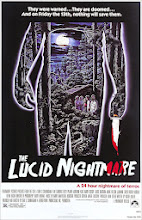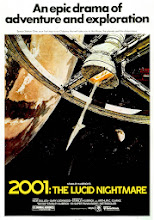Once Upon a Time in the West
Director: Sergio Leone
Year 1968
Once Upon a Time in the West is an epic spaghetti western that expertly uses its three hour runtime to make a film that is truly larger than life in every aspect of its production. Sergio Leone imagines a brutal and savage world filled with gritty gunslingers that fight under their own personal code of morals. Some murder in order to become powerful and wealthy, some kill because it’s the only life they know, and some extinguish life because their thirst for revenge just can’t be quenched. This sprawling journey into the harsh environment of the Wild West should not be missed and it’s a prime example on just how good this genre of filmmaking can be when pushed to the limit.
This ambitious film follows the hectic lives of a plethora of different individuals as they try to make a life for themselves in this viscous frontier of the American West. There’s Jill McBain, a recently widowed woman, who moves from New Orleans in order to find a new life that will hopefully help her forget her sordid past. Then there’s Cheyenne, a leader of a gang of bandits, who has recently been framed for a pair of murders that he hasn’t committed. Then there’s the nasty gun for hire Frank, who works for a railroad tycoon and is legendary for being cruel and unsympathetic to those that meet their end by the barrel of his gun. Finally there is the mysterious man known as simply, Harmonica, a lone gunman beckoned by destiny and gifted with the skills to accomplish his own personal goals, revenge. All of these characters collide in a flurry of gunfire that change the look of the American West, while in the process forging a new path on this wild and dangerous frontier.



Once Upon a Time in the West is without a doubt one of the most iconic depictions of the spaghetti western genre that I’ve had the pleasure to witness. Filled with all the grit and splendor that make this film classification so much damn fun, Leone hit it out of the park on accomplishing something bigger than the genre itself. Shot in a style that truly demands your attention, the film makes you believe that you’re witnessing an actual event play out, as guns start to fire and the bodies begin to pile up. Never has a more diverse group of actors come together to make a cohesive and well thought out fictitious world come to life, and the heart and soul that is felt within each actors role is unparalleled.
The age of spaghetti westerns has come and gone, but the presence of this film has been felt long after and it still maintains that same power to this day. It takes an accomplished filmmaker to pull off that timeless nature, and Sergio Leone makes it all the more clearer that he was one of those true masters of the cinema. Once Upon a Time in the West is proof that some genre efforts can surpass the confines of their respected categories and break into uncharted territory right beside some of cinemas most treasured classics. This film is a…….
 |
| Here comes the welcome wagon..... of PAIN! |
 |
| Play me some sweet tunes there Bronson. |
 |
| This was not a good day for a picnic. |
 |
| What are you so happy about Claudia? Oh yeah, that's right.... you're hot. |
 |
| Sweet sassafras! You're HOT! |
 |
| Damn Bronson! You can play! |
 |
| The worst welcoming commitee EVER. |
 |
| The door says STAY OUT, but you can COME IN. |
 |
| Let those baby blues sparkle Fonda. You look fabulous! |
 |
| Hi all! Hope you're enjoying the show. |
 |
| Get up you lazy crippled bastard! Damn that's cold Henry. |
 |
| Money, Money, Money, Money......... MONEY! |
 |
| Aint this some shit?!?! |
 |
| There's only room for one badass in this town. |
 |
| I love bubbles! |
 |
| Turn around Bronson! There's a half naked chick behind you! |
 |
| Missing out on the massacre makes Frank sad. |
 |
| What kind of demented circus act is this?!?! |
















































































































No comments:
Post a Comment